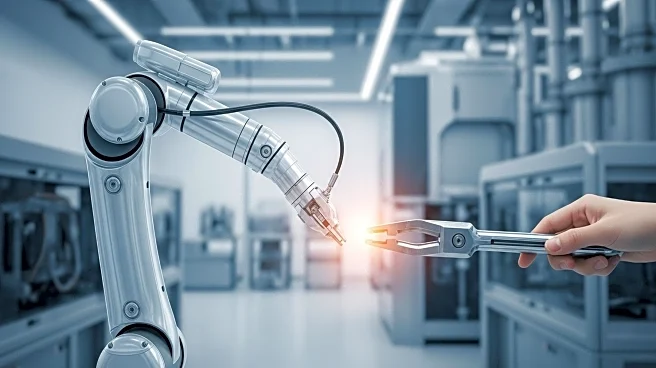What's Happening?
NCMT and BEL Engineering are collaborating to tackle the skills shortage in the manufacturing sector by integrating modern 5-axis technology with social media platforms like TikTok, Instagram, and YouTube. This initiative aims to attract young talent by providing hands-on training in a digital-first learning environment. The partnership has equipped BEL's Training Academy with advanced machinery, allowing apprentices to develop industry-ready skills. The approach combines real-world training with social media insights, helping apprentices familiarize themselves with cutting-edge technology and boosting their confidence to innovate.
Why It's Important?
The collaboration between NCMT and BEL Engineering is significant as it addresses the critical skills gap in the manufacturing industry, which faces 55,000 unfilled vacancies annually. By leveraging social media, the initiative aims to inspire and attract young people to engineering careers, potentially reversing the decline in apprenticeship starts. This approach not only enhances the skill set of future engineers but also ensures that the manufacturing sector remains competitive and innovative. The integration of social media into training programs represents a modern strategy to engage the next generation of engineers.
What's Next?
The partnership is expected to continue expanding its training programs, potentially attracting more apprentices and addressing the skills shortage in the manufacturing sector. As the initiative gains traction, other companies may adopt similar strategies, blending technology with social media to engage young talent. The success of this approach could lead to broader changes in how vocational training is conducted, emphasizing digital engagement and real-world application.
Beyond the Headlines
The use of social media in vocational training highlights a cultural shift in how young people perceive and engage with traditional industries. By meeting apprentices where they are—online—NCMT and BEL Engineering are not only addressing skills shortages but also reshaping the image of manufacturing as a dynamic and innovative field. This could lead to increased diversity in the industry, attracting individuals who might not have considered manufacturing as a career path.











